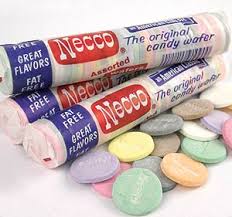I have seen lots of friends and respected news sources bashing Microsoft today with the announcement that the CEO, Steve Ballmer, will be retiring in the next 12 months.
First and foremost: I am not a microsoft fanatic. I am a Mac user, and am far more productive on the Apple platform, so take this with a grain of salt.
Many of the messages I have seen are lamenting that Ballmer should have retired/been fired a decade ago. Lots of hate around Vista and Win8.
But I think those are unfair criticisms.
As a Mac person, I moved my work laptop to Vista when it launched, and I actually liked it. Of course, it had well supported hardware, and I waited long enough for quality signed drivers for our printers and other items I connected to. I found it to be very stable, and actually quite decent to use. I feel like a heretic, because the mantra in the wild is to bash Vista as a huge mistake. But it was the first Microsoft OS that put security in the forefront. Yes, that meant that you were not allowed to just run as administrator. If the software you wrote expected administrator privileges, you’re gonna have a bad time. And the desktop search was well done, and after it completed its initial indexing really improved the user experience.
Windows 7 is much more polished. Microsoft used the three years in between the two systems wisely, and put out a great, usable, and very accommodating OS. I have been using it at home and at work since it’s day of launch in 2009 and it is a strong performer. Of course, all the cruft demanded by my employer causes me to curse the ground that Microsoft occupies, but that is hardly their fault.
A few weeks ago, I had some time to kill, so I sat infront of a new-ish laptop with windows 8 and a touchscreen. I was pleasantly surprised. It was no where near as awful as the pundits make it out to be. I am confident that I could use it day to day. I have yet to try Office 2013, but I liked the transition to the Ribbon in Office 2007, and the significant improvements in 2010, so I am sure that when I am forced to move to Office 2013, it will be no big deal.
What kills the Windows experience is the proliferation of crappy, under powered, poorly supported and unreliable hardware. The drive to sub $400 laptops comes at the cost of quality, and capability of components. While you can get decent hardware, you have to hunt, and read a lot of spec sheets to ensure that you get what you need. Hardly a task for the novice.
Microsoft has also greatly improved their reputation in the back office. SQL Server is a solid, capable platform. Server OS’s are quite good today (even if licensing is a bit wonky), and Hyper-V is a decent bare metal hypervisor for virtualization.
The real problem for Microsoft is their connection to the average consumer. What they sell comes bundled with hardware, and the experience of the user is dominated by fit/finish and appropriateness for the application. Apple does this so much better, they have fewer choices, but just do not offer a poor performing system. Everybody is on an even keel, and that leads to a greater degree of user satisfaction.
Of course, the XBox also is a huge success for Microsoft in the consumer space. But beyond that, their products are me-too, and lack the attention grabbing that Apple or Android devices get.
But Microsoft still own the enterprise, and is growing in the data centers. Their cloud computing platform is promising, and their hybrid cloud based document creation/sharing/collaboration solution is in many ways superior to GoogleApps.
Yes, Microsoft’s stock has been a mediocre performer for the last 13 years, but that is not a terrible thing for a company with a market cap of 1/4 trillion dollars.



